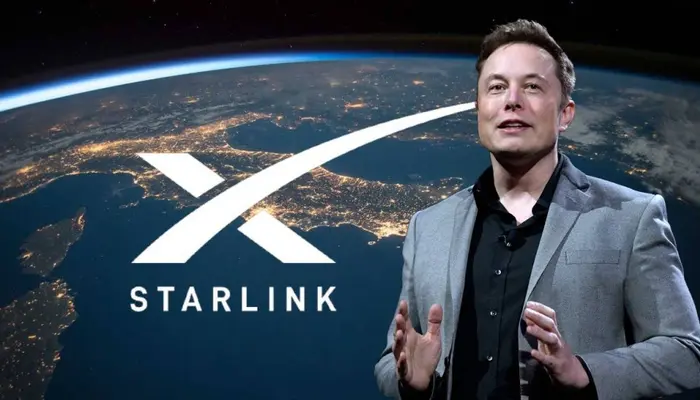
The Starlink Revolution: Transforming Global Connectivity 2025
Introduction
In a world where the digital economy is growing rapidly, internet connectivity is the lifeblood of modern society. From economic development to education, healthcare, and communication, access to reliable and fast internet is increasingly seen as a fundamental need. However, large swathes of the world, particularly in rural and remote areas, still suffer from poor or no internet access due to infrastructure challenges, geographical limitations, and financial constraints. Enter Starlink, the satellite internet constellation project launched by SpaceX, with a revolutionary vision to bridge the global digital divide.
Starlink is fundamentally changing how the world accesses the internet by utilizing a constellation of low-Earth orbit (LEO) satellites to deliver broadband services to underserved and unserved regions of the world. As the technology progresses and the network continues to expand, the potential for Starlink to disrupt global connectivity and redefine the internet landscape is becoming clearer every day.
This article will explore the Starlink revolution, its technology, its global impact, potential challenges, and what the future holds for this innovative venture.
What is Starlink?

Starlink is a satellite internet service that aims to provide high-speed broadband to virtually every corner of the Earth, especially areas where traditional internet infrastructure (such as fiber optics or cable networks) is either unavailable or impractical. The initiative is part of SpaceX, the private aerospace company founded by Elon Musk in 2002. While SpaceX is best known for its reusable rockets and space missions, its Starlink project is arguably one of its most ambitious endeavors.
At its core, Starlink seeks to deploy a network of thousands of low-Earth orbit (LEO) satellites that work in conjunction with ground-based stations and user terminals to provide internet services. Unlike traditional satellite internet, which relies on geostationary satellites placed far above the Earth (at an altitude of around 35,000 kilometers), Starlink’s LEO satellites orbit much closer to the Earth, typically at altitudes ranging from 340 km to 1,200 km. This proximity significantly reduces latency and improves the speed and quality of internet connections.
The satellites communicate with user terminals—compact, flat dishes that can be installed at homes or businesses—and ground stations, which in turn connect to local and international internet infrastructure. The constellation aims to provide consistent, high-speed broadband to rural and underserved areas across the globe.
How Starlink Works: The Technology Behind the Revolution
The technology that powers Starlink is cutting-edge and represents a significant leap in how we think about satellite communication. Here are the key components and technologies that make Starlink possible:
1. Low-Earth Orbit (LEO) Satellites
Traditional satellite internet relies on geostationary satellites that orbit at much higher altitudes, resulting in significant latency—typically around 500 to 600 milliseconds. This high latency can cause issues with activities such as video calls, gaming, or any task that requires real-time communication. By contrast, Starlink’s LEO satellites orbit much closer to the Earth at altitudes of 340 to 1,200 kilometers. These lower orbits result in much lower latency, typically around 20-40 milliseconds, comparable to ground-based broadband services.
The Starlink constellation is designed to consist of thousands of LEO satellites. As of early 2025, SpaceX has already launched more than 3,000 satellites, and the plan is to expand the network to 12,000 satellites or even 42,000 satellites in the coming years. This large number of satellites ensures global coverage and minimizes the risk of service interruptions.
2. Phased Array Antennas
Starlink uses advanced phased-array antennas for communication between the satellites and the user terminals. These antennas are flat, lightweight, and capable of electronically steering their beams without moving parts. This allows the user terminals to track the satellites as they move across the sky. The lack of mechanical parts makes the terminals more durable and easier to install.
The phased-array antennas on the satellites enable high-speed communication with the ground stations and user terminals. By utilizing multiple beams and frequencies, Starlink can simultaneously support a large number of users in different areas with minimal interference, ensuring reliable connections even in areas with high demand.
3. SpaceX’s Falcon Rockets
SpaceX’s Falcon 9 rockets play a crucial role in launching Starlink satellites into orbit. These rockets are reusable, which significantly reduces the cost of space launches. Since the inception of Starlink, SpaceX has conducted regular launches to place new satellites into orbit, and the ability to reuse rockets has made it more cost-effective to deploy the growing Starlink constellation.
4. Ground Stations
Ground stations are terrestrial facilities that connect Starlink’s satellite network to the global internet infrastructure. These stations receive and transmit data to and from the satellites overhead. Starlink’s network of ground stations is being expanded to ensure full global coverage and optimize the performance of the system.
5. User Terminals (Dish)
The user terminal, often referred to as the Starlink Dish, is a small, flat antenna that is installed at the user’s location. It connects to the Starlink satellites overhead and provides internet service to the user. The dish is designed to be easy to install—users simply need to place it outside with an unobstructed view of the sky, and the dish automatically aligns itself with the satellites.
Starlink’s Global Impact: Bridging the Digital Divide

The most revolutionary aspect of Starlink is its potential to bring high-speed internet to parts of the world that have traditionally been underserved by terrestrial broadband providers. According to the International Telecommunication Union (ITU), almost 3.7 billion people worldwide still lack internet access, primarily due to geographical barriers, poverty, or lack of infrastructure. Starlink has the opportunity to change this by providing an affordable and scalable solution for rural, remote, and underserved regions.
1. Global Connectivity
Starlink’s ability to provide internet to virtually any location on Earth—regardless of its remoteness—means that areas which previously had no or poor access to the internet can now be connected. This could be especially transformative for remote communities in regions like sub-Saharan Africa, rural Asia, and parts of Latin America. Starlink’s service could empower these communities with access to vital information, educational resources, healthcare, and economic opportunities.
2. Enhancing Education
Access to high-speed internet is a critical enabler of quality education. In many parts of the world, students are unable to access online learning resources due to poor internet connectivity. Starlink’s satellite network could change this dynamic, providing students in remote areas with access to the same online education materials as those in more developed regions. This could help bridge the educational divide and provide equitable opportunities for students everywhere.
3. Boosting Healthcare
Telemedicine and remote healthcare services have become increasingly important, particularly in rural areas where medical facilities are scarce. With high-speed internet connectivity provided by Starlink, individuals in underserved areas can access telehealth services, including consultations, diagnostics, and follow-up care. This could dramatically improve health outcomes and provide essential medical services to populations that otherwise have limited access.
4. Economic Empowerment
The digital economy is growing rapidly, and access to the internet is crucial for participating in it. For small businesses, entrepreneurs, and farmers in rural areas, Starlink could provide the means to access global markets, participate in e-commerce, and obtain real-time information on supply and demand, weather conditions, and pricing. This increased access to information could boost productivity, improve livelihoods, and drive local economic development.
5. Disaster Recovery and Emergency Services
During natural disasters or humanitarian crises, traditional communication infrastructure is often the first to break down. Starlink’s satellite-based internet system could provide crucial communication capabilities in such situations, enabling emergency responders to coordinate efforts, provide assistance, and keep affected populations connected to the outside world.
Challenges Facing Starlink

While Starlink holds great promise, several challenges could hinder its widespread adoption and success. Some of these challenges include:
1. Competition with Traditional Internet Providers
Starlink faces competition from established internet service providers (ISPs), such as fiber-optic and cable companies, which already have a significant market share in many urban areas. These traditional ISPs have the advantage of existing infrastructure and may have lower costs for delivering broadband to densely populated areas. For Starlink to be competitive, it must ensure that its service offers better performance, affordability, and coverage, especially in urban areas where infrastructure is already present.
2. Regulatory and Licensing Issues
Satellite internet services are subject to regulatory oversight by governments and international bodies. As Starlink expands, it will need to secure licenses and approvals from governments worldwide, which may vary depending on each country’s laws and regulations. Navigating this complex regulatory landscape could be time-consuming and challenging.
3. Space Debris and Sustainability
One of the concerns raised by critics of Starlink is its potential contribution to the growing problem of space debris. With thousands of satellites being launched into orbit, the risk of collisions and the creation of debris increases. SpaceX has addressed this concern by designing Starlink satellites with a self-destruct mechanism to deorbit safely once they reach the end of their operational life. However, the issue of space sustainability remains a challenge for the broader satellite industry.
4. Affordability
While Starlink’s service is expected to be competitively priced, the cost of the satellite dishes and installation may still be a barrier for some users in developing regions. To reach its goal of global accessibility, Starlink will need to find ways to make its service affordable, particularly for low-income individuals and families in underserved areas.
The Future of Starlink
The future of Starlink is exciting, with the potential to redefine global connectivity and revolutionize how the world accesses the internet. As the network continues to grow and the technology improves, Starlink could become a dominant player in the global internet service market, especially in underserved areas. The possibility of providing global broadband coverage to remote regions could make Starlink a key enabler of economic development, education, healthcare, and digital inclusion.
Furthermore, with the increasing demand for high-speed internet and the rise of Internet of Things (IoT) devices, Starlink’s satellite network could play a critical role in supporting these emerging technologies. As 5G networks roll out and the need for faster, more reliable internet grows, Starlink’s low-latency, high-speed connectivity could complement terrestrial networks and provide global coverage.
Conclusion
The Starlink revolution represents a monumental shift in how we think about internet connectivity. By leveraging the power of satellites and low-Earth orbit technology, SpaceX’s Starlink project is working to bring high-speed internet to everyone, regardless of location. From bridging the digital divide and empowering remote communities to providing vital services like telemedicine and education, Starlink’s potential impact is vast.
However, the road ahead is not without challenges, including competition, regulatory hurdles, and the environmental impact of space debris. Despite these obstacles, Starlink’s innovative approach to global connectivity positions it to be a key player in the future of the digital economy. As the network continues to grow and evolve, the Starlink revolution could become a cornerstone of global communication and a tool for positive change worldwide.
For More Articles VISIT HERE


